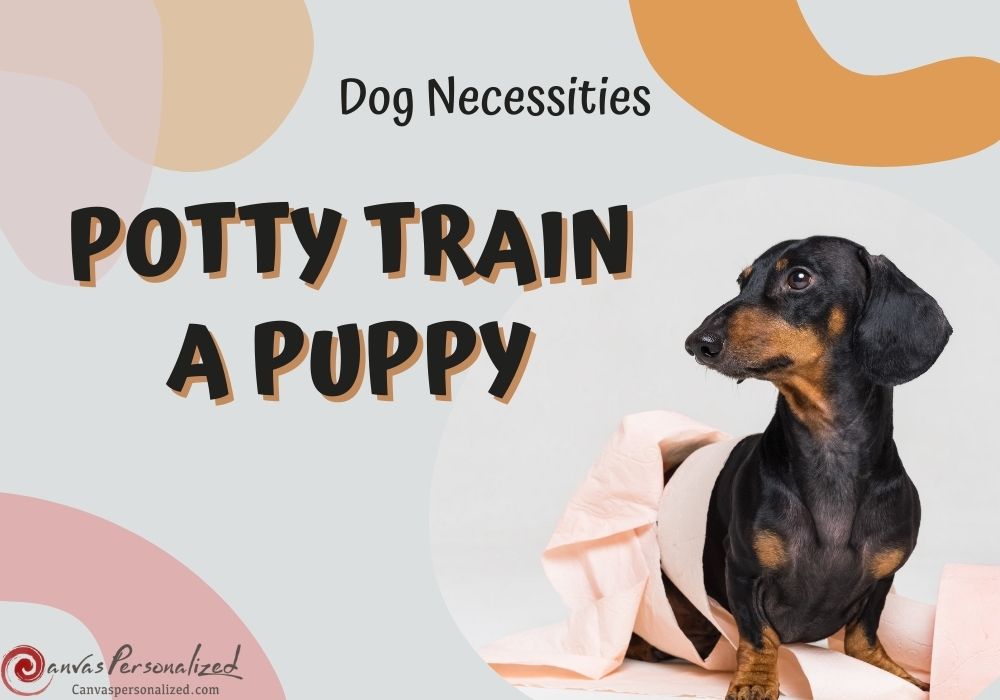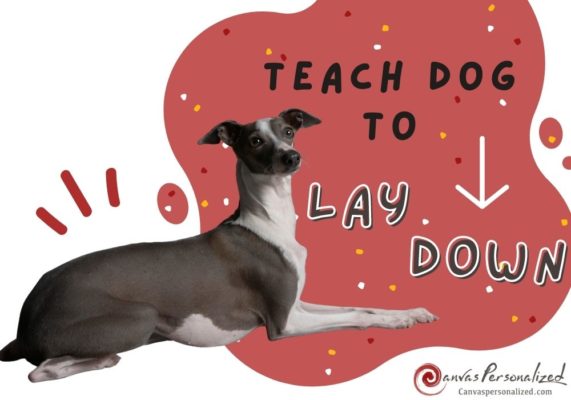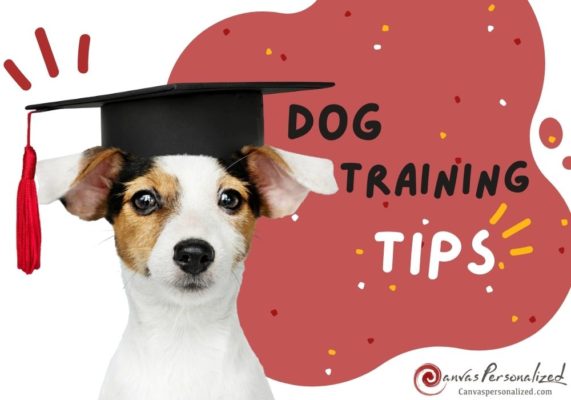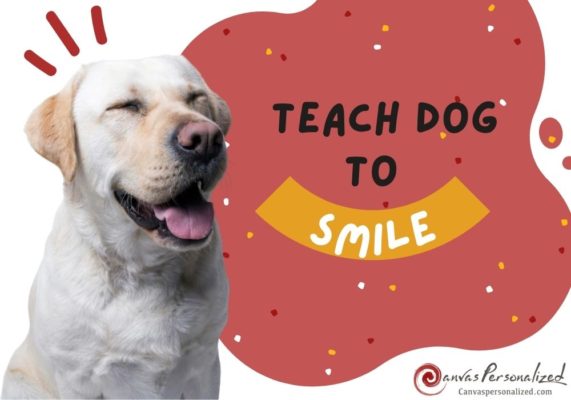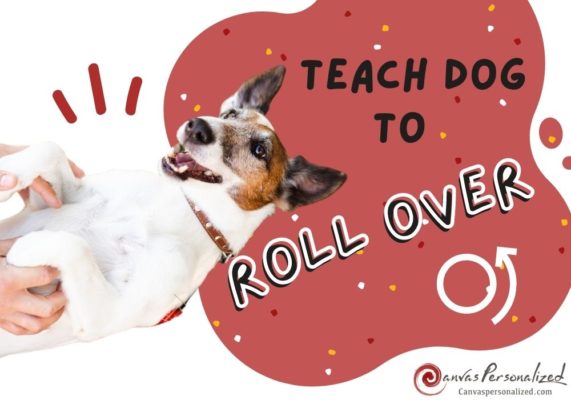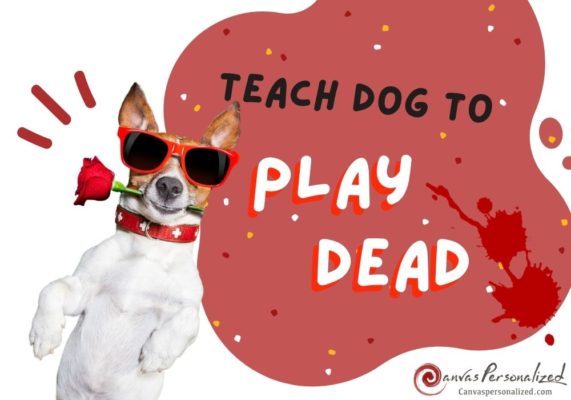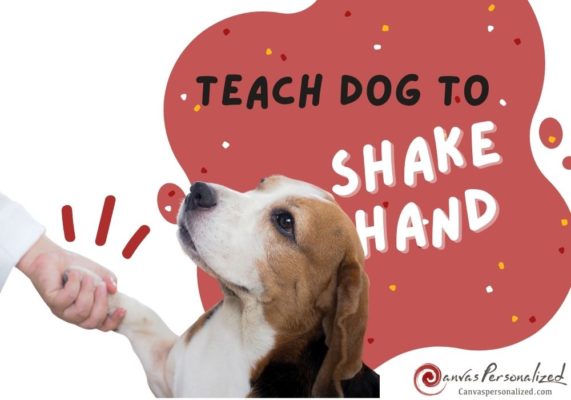Teaching your pet proper bathroom habits is only part of the puppy grows journey; it’s also about creating a routine and strengthening your relationship with your dog. In this post from the Canvas Personalized, we’ll go over the basics of the potty train a puppy and some helpful advice to make the process go faster and with less hassle.
Why Is The Potty Training Young Puppies Important In House Training Process?

Many puppies, like infants, have little choice but to “unleash their goodies” whenever and wherever they like. As dog owners, your mood will not be happy if your puppy urinates on your carpet, and your anger won’t help your dog learn not to do so in the future. That is why it is critical to plan ahead of time on how to house train a dog at the proper time and place.
It would be best if you started enforcing rules and teaching good potty behavior to your dog as soon as possible. To your surprise, new puppies introduced right will live a happier, healthier, easier-to-care-for life, or you may want to crate train your puppy.
How to house train a puppy? Keep reading to learn the fundamentals and pick up many helpful pointers.
The Potty Training Process
Most first-time dog owners fear the prospect of doggie potty training in a designated potty area or spot. At first, training a puppy can be challenging, but like many things in life, it can be conquered by breaking it down into smaller, more manageable steps.
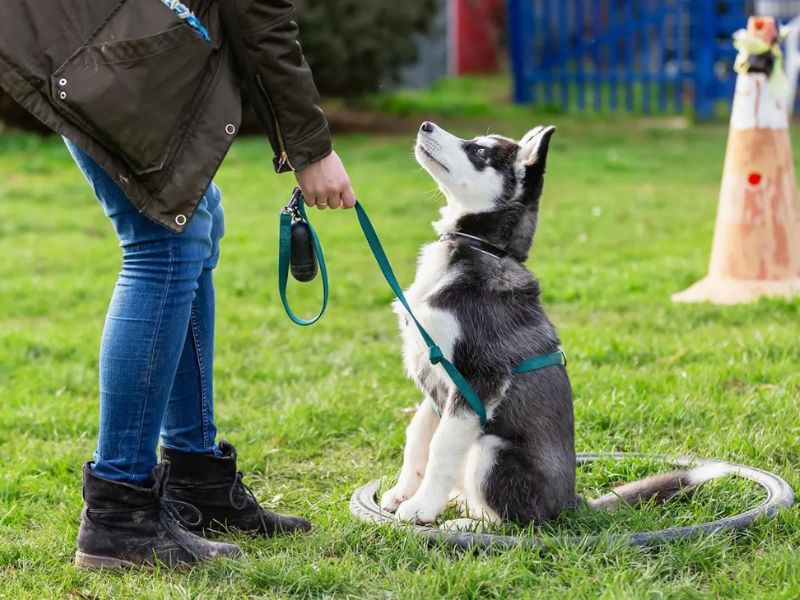
While learning puppy potty training tips, remember that dogs are naturally den animals, so they are inclined to treat the entire world as a potty. Punishment is not appropriate in training a dog to potty indoors or outdoors without accidents. Although it will take effort and patience, you can successfully potty break your puppy.
Doggie Potty Training Requirements
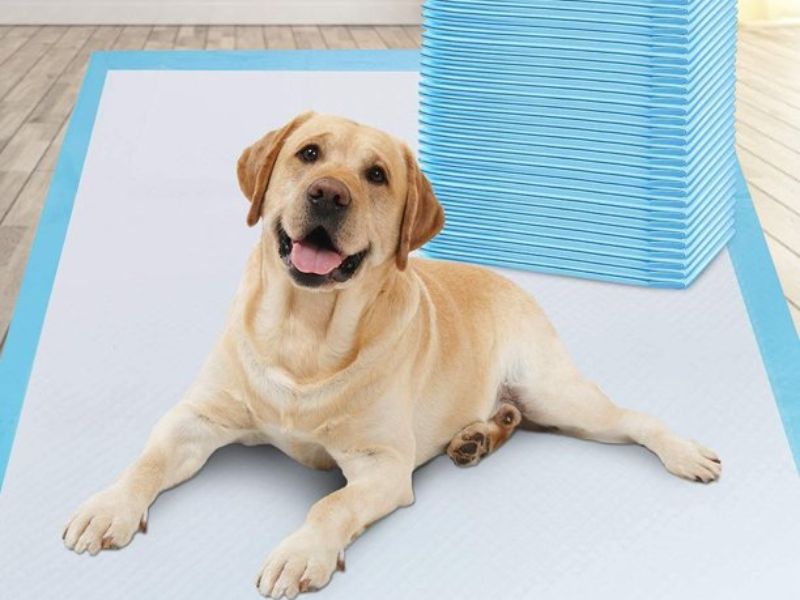
Before learning how to start potty training your puppy, check out these essential pieces of equipment and requirements:
Pieces of equipment:
- A tether or harness
- A leash length of 3.5–4.5 feet (no retractable feature)
- Boxes or toilet paper holders/ paper towels
- Wet wipes
- Delicious bite-sized snacks
- Pet stain remover for carpet
- Equipment for cleaning the floors and mopping
Requirements:
Consistency: Maintaining a consistent routine from the first day is essential to potty training a puppy. Moreover, a regular feeding and potty schedule can help your puppy live happier and healthier.
Positive reinforcement: Use the appropriate bathroom facilities to learn puppy potty training tips. Giving them positive feedback and reward immediately is essential to keep puppies interested in learning.
Patience: Be patient since doggie potty training can take some time. Don’t lose your cool if your puppy has an accident; be kind and patient.
Watch for signals: Observe your puppy carefully and learn its signals. When it comes their potty time, they could start sniffing, whimpering, or circling. Get them out to the bathroom or out of the living space right away.
5 Easy Steps Of The Doggie Potty Training
First things first: Take on the proper frame of mind.
The appropriate attitude and mindset can be a helpful guidepost as you embark on doggie potty training with your puppy. It’s crucial to remember that the first stages of house training should not involve punishing your dog when pottying indoors. The goal is to ensure they can always play outside and avoid bad habits.

Moreover, the puppy potty training process isn’t about how “good” your puppy is but rather how “excellent” you are at being consistent, managing your time well, and rewarding the behavior you want to see in your dog.
Step 1: Choose And Stick To A Potty Spot

Choose a potty spot or area outside where you want your puppy to pee or poop. The dogs living in apartments should also be able to locate grassy areas that aren’t in the way of pedestrians or vehicles.
It’s essential to take your dog to the same potty spot every time they need to go outdoors throughout this stage of training. Consistency is critical while housebreaking puppies since they have excellent senses of smell.
Step 2: Get A Crate Training Or Confinement Space
- Crate Training As The Effective Potty Training Process
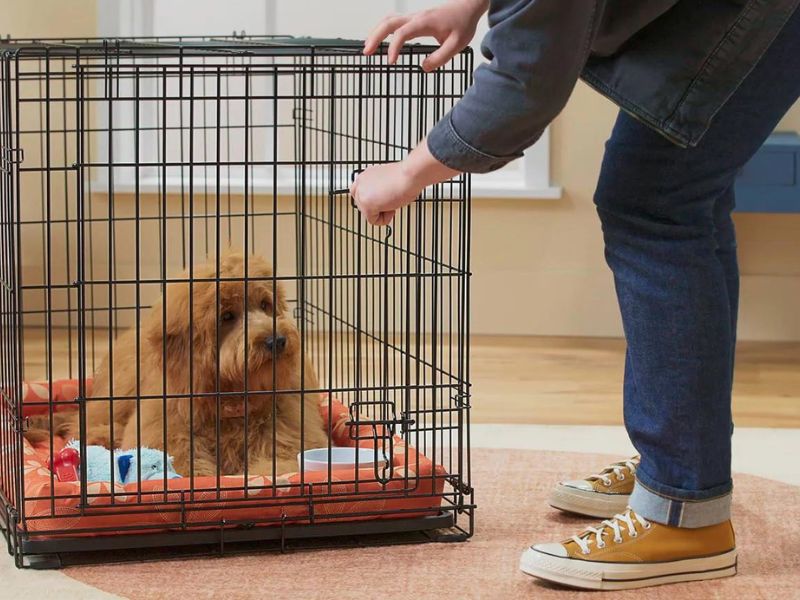
Bringing your puppy to their potty area can greatly facilitate training. It means having crate training will help your puppy learn where it can pee or poop. Prepare with soft bedding, water, toys, and an easy-to-clean surface (such as pee pads). Moreover, if you have a young puppy, you shouldn’t kennel them for more than three hours daily.
There are two main factors in ensuring puppies can live in the crate as their new home.
First, you must check that the crate is of an appropriate size. Your dog’s crate should be big enough to have enough room to sit, lie down, and turn around. To accommodate their rapid growth, most dogs do best in a crate that can be expanded as they age.
Second, get puppies used to the crate by letting them spend a lot of time there. Your dog should think of his crate as a happy and secure place. As a result, crate time should not be used as a form of punishment.
- Use a confinement space
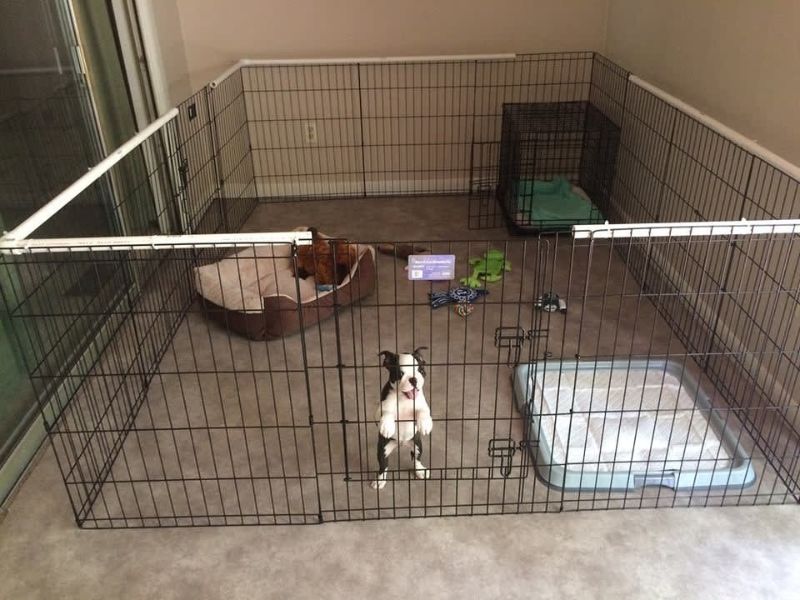
You can still utilize confinement when your pup no longer uses its crate. Using baby gates is a great way to limit the potty area that your puppy eliminates. Moreover, using any type of puppy pad can help reduce the likelihood of accidents on the floor. Hence, watching them as much as possible when they are out of the potty area is essential.
Step 3: Understand The Signs For How To House Train A Puppy
Most puppies cannot communicate with you verbally, but they will try to show you that they have to go potty in their unique way. When you notice your pup, you must quickly take it outside to its designated bathroom. If you see any of these signs, you must be ready to take your dog outside immediately.
- Sensing the aroma of its rear
- Going in circles while pacing
- When the dog is either barking or scratching at the door
- The act of sniffing (dog’s nose) the ground
- Squatting
Pro tips:
- Keep a leash near the front entrance to quickly lead them outside.
- Always take your pup to the same area in the yard when they have to go outside. Once they have memorized the same spot, they will continue using it even when you are not around.
Step 4: Creating the doggie potty training schedule
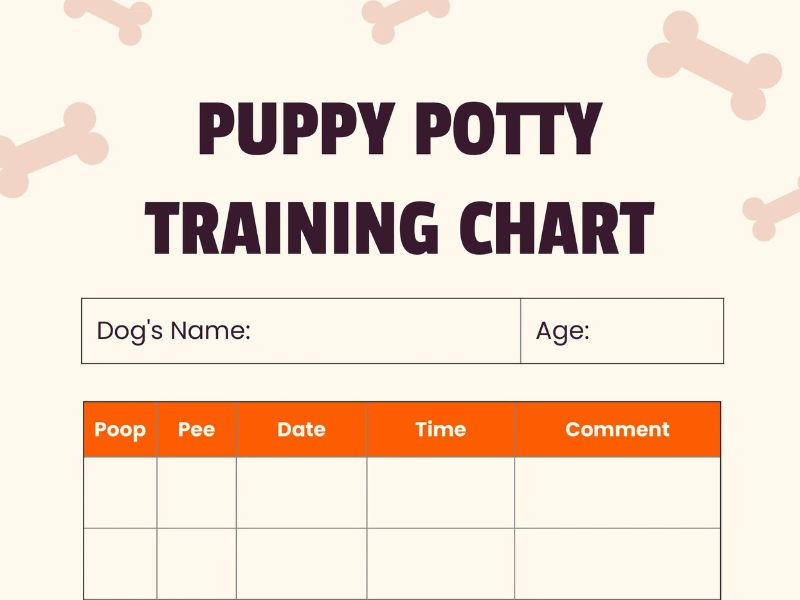
Establishing a regular habit can aid your dog in mastering how to house train a puppy. In terms of emotion, it will make your dog feel secure and increase trust between you and your dog. A perfect way to ensure continuity is to establish a routine that includes the following:
- Time for meals (at the same time each day)
- Bathroom breaks
- Time for confinement (or the crate)
- Time for fun
- Time for bed
- Make sure everyone in the family knows and sticks to the routine.
Until about nine months, a puppy’s bladder control is still developing. Starting to take your puppy out roughly every 45 minutes while awake. It is essential to monitor your puppy and make adjustments as necessary.
Step 5: Go Potty! and Repeat
Your potty training efforts will be much more successful once you have established a routine and crate for your dog. Walking your dog to the bathroom is an essential part of this training.
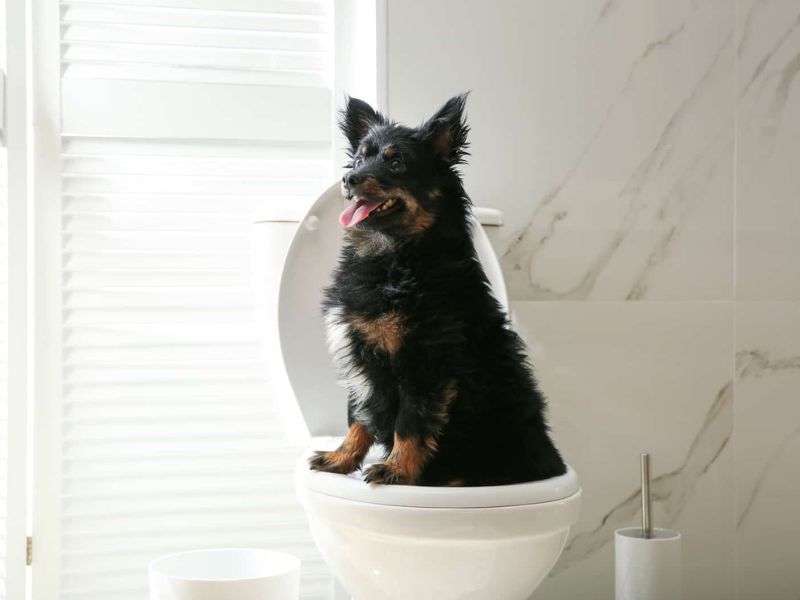
Here are some things to keep in mind to create a potty puppy training routine:
- When you bring your new puppy home for the first time, take your dog to a designated bathroom spot first. And remember to put your dog on a leash at the outset for safety’s sake.
- Regularly take your puppy outside, preferably every two hours, especially after they wake up, play, and have consumed food or water.
- Add a verbal cue: When taking your dog to the bathroom, tell it to “Go potty” and use that term from now on to encourage the behavior. Get your dog to associate the desired behavior with the cue word or phrase as soon as possible by “repeating” it while standing still.
- Please give them a high-value treat after they go to show them that you appreciate their doing what you’ve asked. Remember that you should only give the treat once, after they finish eliminating, and not again until you return home. Or “good girl” or “good potty” can be used with enthusiastic praise as training progresses.
Puppy accidents are inevitable, but going indoors should not become the norm. To sum up, if you spend enough time establishing a routine when you bring your dog back in after using the outside restroom, you must be a good time manager.
Establish Successfully Potty Breaks
Now that you have a better grasp on how to care for your puppy in between bathroom breaks, you can begin to learn how to house train a puppy by establishing a routine potty break that reinforces good behavior.
Step 1: Take Your Puppy Out Every 30 Minutes
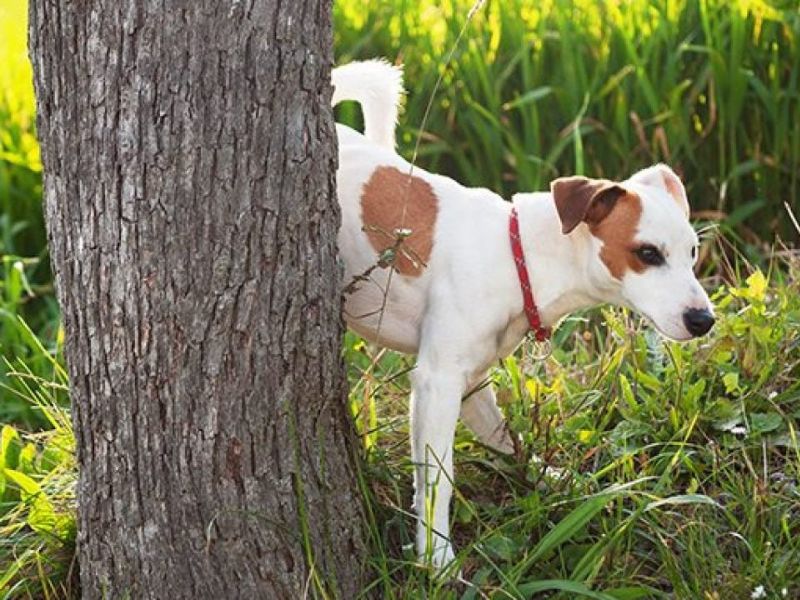
Take your puppy to a potty area (outdoors or indoors) on a leash at least once every 30 minutes while you are home and awake. At night, one or two outings are enough for most puppies. Plus, the puppy won’t be able to explore its environment and will become easily sidetracked.
Step 2: Stand quietly and watch to see if the puppy pees or poops
Don’t move from where you’ve stopped, and make sure your dog is in a safe place to go potty. Watch your puppy quietly to see whether they have an accident. If you don’t make noise, your puppy will be less distracted and more likely to finish potty training a puppy quickly.
Step 3: Praise your pup if it has a short potty time

Praise and offer a treat when the puppy has finished eliminating outside. If the puppy does not pee or poop, that’s OK—take the puppy back to a confinement area for 10 to 20 minutes and then outside again.
Step 4: Give your dog off-leash fun time after potty time
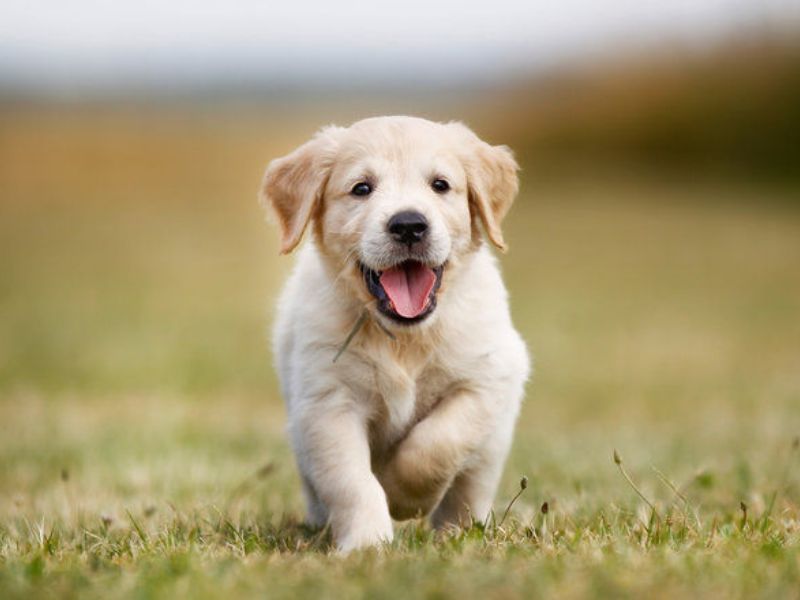
After the puppy pees or poops, play or walk leash-free with the puppy outdoors, or give your puppy up to 15 minutes of carefully supervised time in the house (whichever the puppy prefers). This will show that potty breaks are the way to more fun. Please don’t make the typical mistake of putting the puppy in its crate as soon as it’s done eliminating.
Step 5: Repeat the potty breaks routine
Pro tip: Make a house training spreadsheet or note where and when the puppy defecates so you can establish their habits in crate training.
Advanced Puppy Potty Training Tips For New Pet
How To House Train A Puppy Quickly
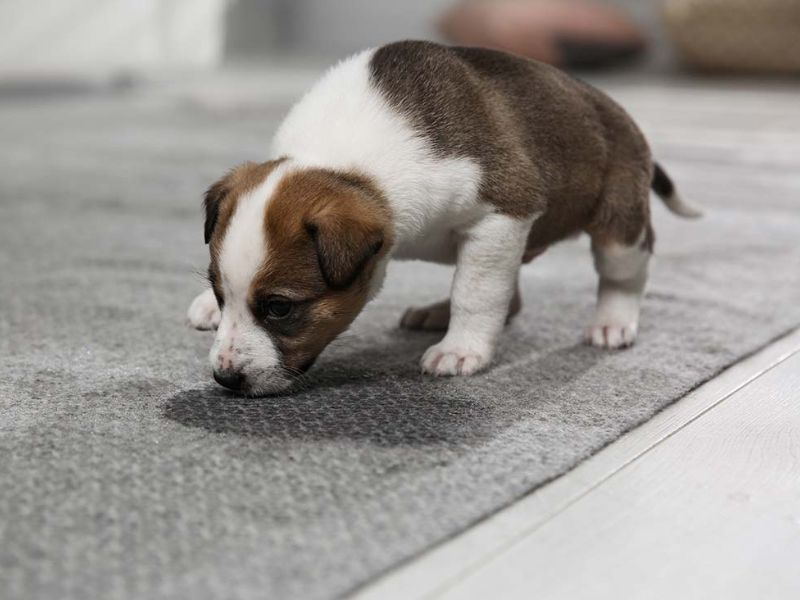
Step 1: Record how often and where your puppy has to use the bathroom
Use the data to analyze when your puppy needs to go to the bathroom, when it is most likely to have accidents, and when it can hold its bladder until its next scheduled trip.
Step 2: Adding some new habits for potty breaks
Along with the recommended 30-minute visits, you should also take your puppy there at these more predictable potty break times:
- As soon as they’ve finished eating
- After a few drinks
- After around 5-10 minutes of active play or exercise
- Right after waking up after a nap
Step 3: Set a regular feeding schedule to potty train a puppy
When house training a puppy, keep all meal and snack times scheduled. So you can keep track of when your puppy eats and uses the bathroom, so you can take them to the designated area at the appropriate times.
Please get advice from your vet on the optimal feeding schedule for your training dogs, as it will vary depending on age, size, and other factors.
Use Potty Puppy Pads And Pee Pads For Training
Taking your puppy outside to use the restroom is preferable, but for some first-time pet owners, such as those who don’t have a yard or who live in a building without a courtyard, this isn’t always possible. If this is the case, you can start your puppy off on puppy pads or paper training and gradually introduce them to potty training outdoors.
Find a specific area in your house to use as the wee-wee pads. When training your puppy, they must learn to eliminate on the puppy pads, not the floor, so a playpen or other barrier should be set up around the pad.
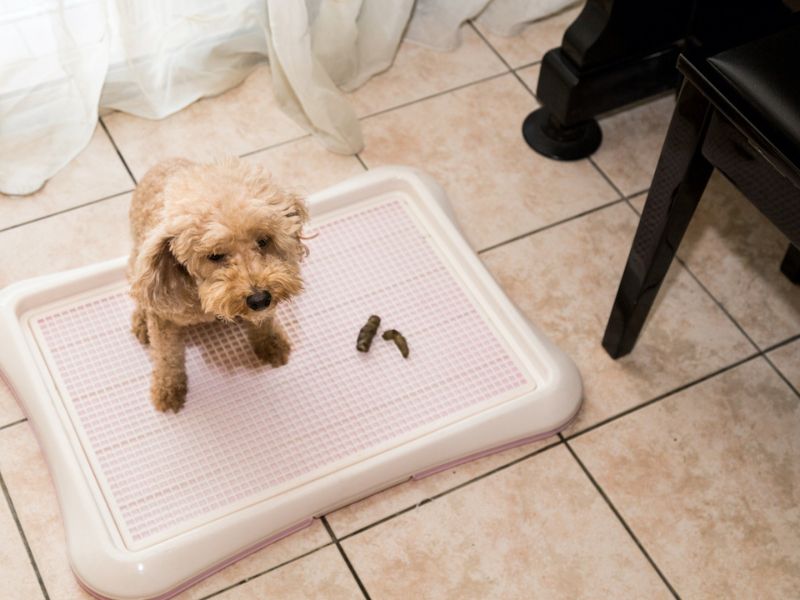
You can walk your dog over on its leash as you train your puppy to associate going to the bathroom with the pad. Puppy pads are often used as an entry point for potty training, with the ultimate goal of teaching the dog to use the outdoors. You can gradually eliminate the boundaries between the pad and the rest of the room.
However, if you can take your dog outside, you should. Doing so is the best potty training method and gives mental stimulation and socialization possibilities. Although it may take some time and patience for a puppy to be fully house trained, the lessons your puppy learns and the connection you provide with them while teaching them can benefit them in many situations other than the potty training process!
What Should You Do When Potty Accidents Happen?
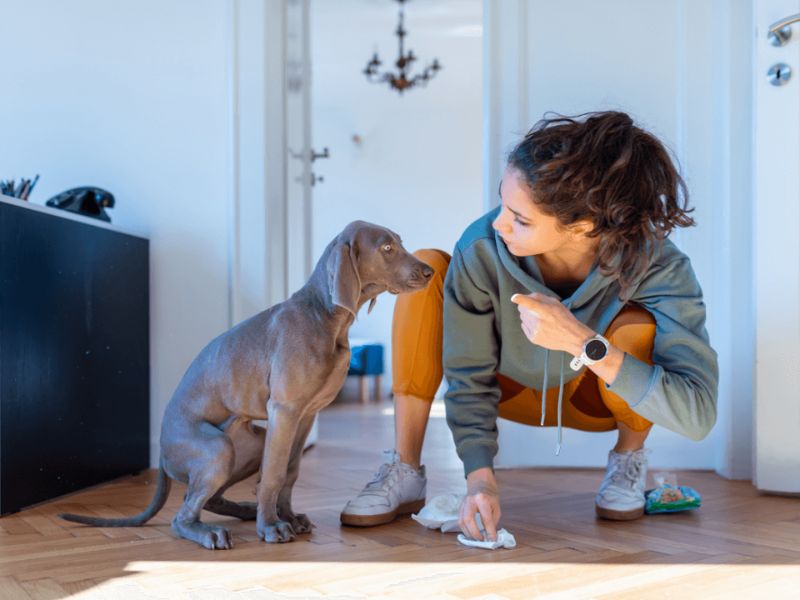
There will be accidents during doggie potty training, just as during a puppy’s training. As part of training your puppy, you might anticipate a few mishaps from your puppy. The following tips will teach you how to avoid typical potty training your puppy accidents:
- Don’t make a big deal of cleaning up after your dog if it has an accident. An efficient, non-toxic, and enzymatic cleanser can eradicate the smell. Blot the area thoroughly before cleaning if a spill occurs on the carpet. If you don’t, they’ll be more inclined to play again at that location.
- Accidents can be reduced significantly by sticking to a regular schedule and keeping a close eye on your dog. If you catch your puppy in the act of eliminating indoors, clap your hands and yell “NO” firmly but without screaming.
- If you discover soiled areas or puppy pads, pick them up without making a big deal. Do not try to discipline your dogs by becoming upset or rubbing the puppy’s nose in their feces; this may scare them but will not teach them anything.
- Take the puppy outside, and if it goes to the bathroom in the correct spot, then praise it. Prevent yourself from being angry and yelling at your puppy.
- If you want to keep the frequency of accidents to a minimum, you need to implement these measures of confinement and surveillance. If your puppy regularly has accidents inside the house, the doggie potty training will be slowed.
Noticeable things: Potty Train A Puppy
Do’s Of Doggie Potty Training

- Take dogs out often: Especially for puppies under 12 weeks of age, you must take them outside every one to two hours. Or take your puppy for a walk after sleeping, playing, eating, or drinking.
- Crate training can aid in the process of teaching a dog to use the bathroom outside.
- Set up a regular time to feed the puppy and take it outside to use the bathroom.
- Give rewards or praise to your dogs once they have good toilet habits, such as going to the bathroom outside or in the right area.
- Positive reinforcement is the practice of rewarding appropriate conduct and discouraging inappropriate behavior.
- Keep the area clean by cleaning up any accidents right away and thoroughly. This will eliminate any smells that could lead the puppy back to the same spot.
- Potty training is a process that requires calm and consistency.
Don’ts of Puppy Potty Training Tips

- Don’t depend on too much potty pad training rather than crate training.
- Don’t hit or yell at the puppy; it will make potty training a harder challenge and hurt the puppy’s faith in you.
- Accidents not cleaned up right away can make training a puppy to go potty harder.
- Avoid using ammonia, as this will just encourage your puppy to return to the area where it was soiled.
- Avoid uncertainty and difficulties in potty training by sticking to the established regimen.
- Learning how to house train a puppy might be frustrating, but it is possible with time and dedication.
How Long Does Potty Puppy Training Take?
The time it takes to thoroughly housebreak your puppy depends on numerous variables, including age, background, strategies, and how well you stick to your training program. So it could take a few weeks or a few months. However, it’s not a quick or easy process since you will most certainly face some difficulties, but if you keep at it, your dog will eventually learn successfully. Hence, consult a vet if you’re at a loss for how to house train a puppy.
>>>Further reading:
- 10 Crate Games For Dogs to Keep Your Pup Happy & Entertained
- How To Teach A Dog To Shake Hands Quickly With 6 Easy Steps
It takes time, patience, and positive reinforcement to potty train a dog successfully. Please provide it with a consistent schedule and the appropriate approach. We hope this article from the Canvas Personalized will assist you in successfully how to house train a puppy. Hence, it may be worth getting advice from an expert, such as a trainer or veterinarian, if you encounter problems.


